Key to the Highway Video
Here is the video that goes with my latest single, Key to the Highway. I’m on the road again. A ramblin’ man I am.
Here is the video that goes with my latest single, Key to the Highway. I’m on the road again. A ramblin’ man I am.
My cover of Key to the Highway is released and should now be available on many digital platforms including Amazon, Apple Music, Spotify and other places. And of course you can find all the information you need about it right on my website on the Music Store page which includes links to those major distributors.
I spent much of my COVID house arrest, and even before that, getting into the blues and especially Freddie King’s music including learning about the origins of the song Key to the Highway.
The history of the song’s origins are little bit murky. It is generally credited to Charles Segar and sometimes to Big Bill Broonzy or to both. From what I can tell, the song started out as standard 12 bar blues form with the Segar version, but when Broonzy recorded it along with Jazz Gillum it was reworked into the 8 bar form which I have used. The Segar recording is a piano driven tune at a medium tempo.
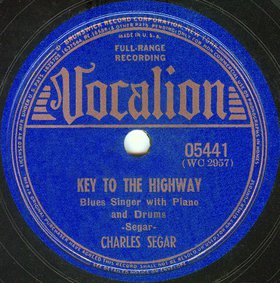
Like I said, the Charles Segar version was 12 bar form and featured the piano as the primary instrument. Then along came Jazz Gillum and Big Bill Broonzy who recorded their version featuring harmonica and acoustic guitar in 1940 in an 8 bar blues format.
The chord progression for the 8 bar format is as follows:
I V7 IV IV I V7 I–IV I–V7
Broonzy followed that with his own solo version a year later on the Okey label in 1941.


After Broonzy passed away in 1958, Little Walter recorded his own cover of “Key to the Highway”. Little Walter’s version changed it to more of a Chicago blues feel with backing by a full band of course with a full compliment of blues harmonica.
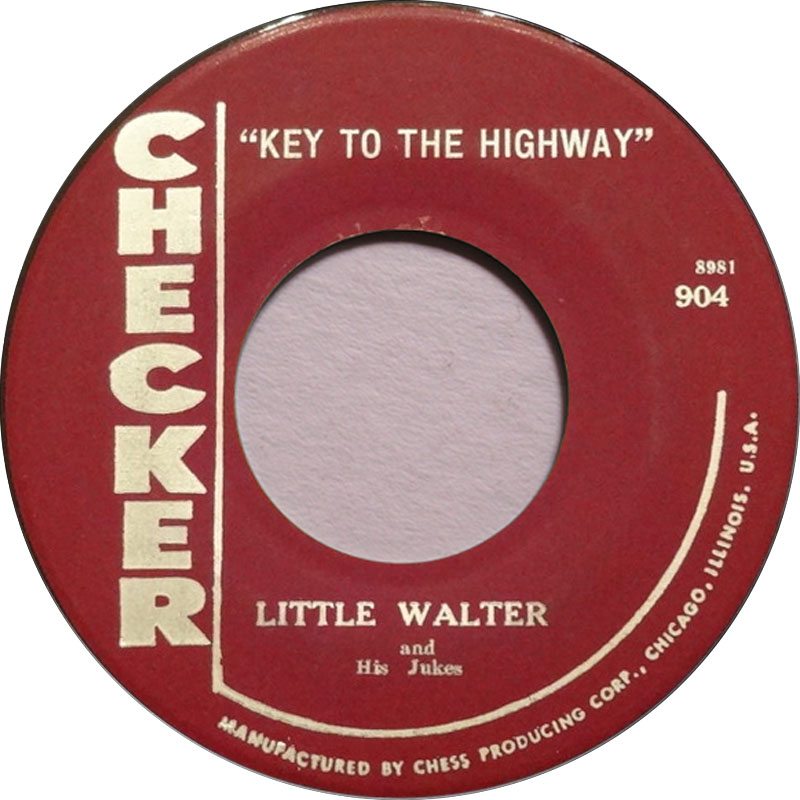

But then along came the King…….Freddie King that is. And he reworked Key again to a harder driving more intense sound with his guitar as lead instrument along with his powerful vocals. Freddie’s cover of Key to the Highway appeared on his “Getting Ready” album released in 1971 by Shelter Records. There is also a video of Freddie playing Key to the Highway live at the 1972 Sugar Bowl half time show.
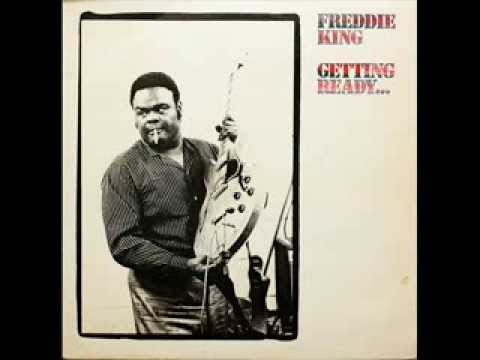

My version of Key to the Highway took Freddie King as inspiration along with a dose of Magic Sam thrown in there for good measure. My recording is in the key of B flat. And for the guitar work I chose an Ibanez Artcore semihollowbody with Super58 pickups playing with a “Carol Kaye” bass pick (plectrum for you Brits). Vocals were recorded through a simple Shure SM-58 mic.
As a new Freddie King fan I have begun acquiring some of his music. To date, I have bookends of his career: Let’s Hide Away and Dance Away with Freddy King which was released the year I was born, 1961 and Burglar released in 1974 two years before Freddie’s death and the beginning of my teenage years. I also enjoy the compilation album, Freddie King, Ultimate Collection.
Let’s Hide Away and Dance Away with Freddy King
The album Let’s Hide Away and Dance Away with Freddy King is an all instrumental album and includes his breakout hit, “Hide Away”. Many of these tunes are pretty catchy, and “San-Ho-Zay” is another on the album that I especially like.
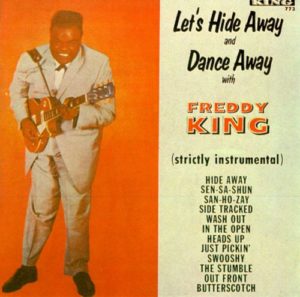

Track listing:
Musicians:
Burglar
When Burglar was recorded, Freddie had left Shelter Records and signed with RSO Records based in the UK due to persuasion from his lifelong fan, Eric Clapton. As the credits in the liner notes indicate this was a massive production which included some of the most prominent musicians of the time beginning with Slowhand himself plus JJ Cale, Issac Hayes and George Terry. The sound of Burglar could be described as Blues meets Funk.


Track listing:
Credits:*
Artist / Credit
*(reposted from the album summary on Allmusic.com)
Freddie King has become one of my most favorite electric blues artists! Before I did a deep dive into the blues I was aware of his name, that he existed, but that was about it.
But after I discovered his music I was hooked. And the more I learned about him as a person, the more I liked him. “The Texas Cannonball.” Man, could he groove.
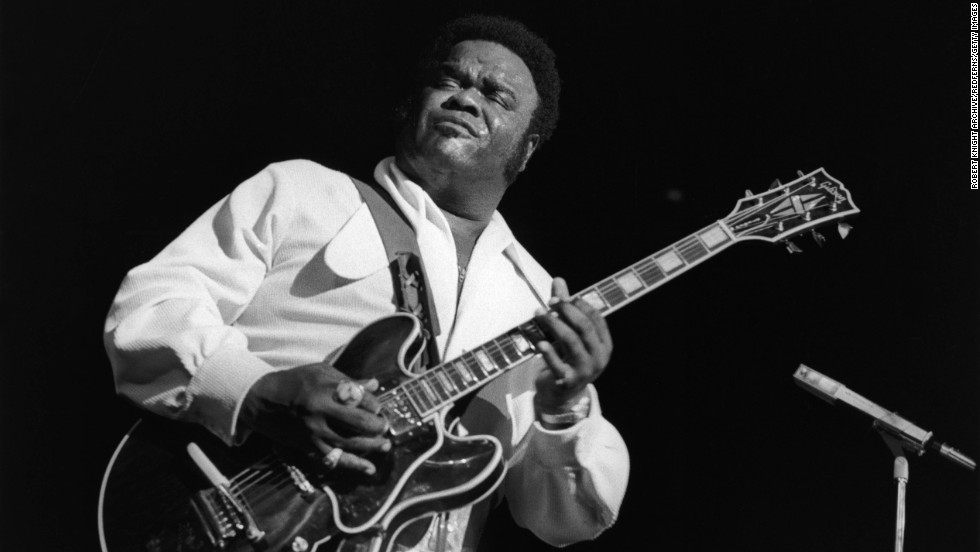

Freddie was born in Gilmer, Texas in 1934 and his birth name was allegedly Frederick Christian, but I have also read that it was Fred King. Later when he began recording, at first he went by “Freddy King” and ultimately he changed to “Freddie”. In 1949 his family moved from Texas to Chicago where he began his rise in the Chicago blues scene sneaking into clubs when he was still a minor. He had a very unique guitar technique and sound.
Freddie played various Gibson guitars….a Les Paul and several semihollow body Gibsons with a thumbpick and a metal fingerpick on his index finger, which gave his guitar a very biting tone and from the videos I’ve seen he often played through a huge Fender amp, maybe a Fender Quad Reverb. I don’t know a lot about Freddie’s band members over the years other than Sonny Thompson who played piano and cowrote some of FK’s songs and Freddie’s brother, Benny Turner, played bass with Freddie for many years up until Freddie’s death and Benny is still alive and still playing music.


Freddie was a big man, standing about 6’5”. Unfortunately, he died way too soon at the young age of 42 on December 28, 1976 from complications from various ailments: heart attack, stomach ulcers and pancreatitis, probably brought on from poor nutrition and heavy touring. What a loss to the blues.
In 2012, Freddie was finally inducted into the Rock & Roll Hall of Fame by none other than ZZ Top.
He was born Freddie (spelled Freddy in the early days of his career) Christian in Gilmer, Texas, in 1934. Early on, he played in a Lightnin’ Hopkins acoustic style, having learned the rudiments of guitar playing and old time blues standards from his mother and uncle. He moved to Chicago in 1950, and fell in love with the blues being played in his new hometown and vowed to become part of the scene. Influenced by Robert Jr. Lockwood, Jimmy Rogers, and Eddie Taylor, he formed his first band “the Every Hour Blues Boys” and began working his way into the highly competitive club circuit. By the mid 1950’s, Freddie King had adopted the surname King (because of B.B.’s success, just as Albert King had done) and got his first shot at recording in 1957, when he cut “Country Boy” for the microscopically small El-Bee label. But the record flopped, and he wouldn’t record again for another three years. Later, in 1960, he signed with Federal Records in Cincinnati, releasing “You’ve Got To Love Her With A Feelin'” with pop chart success. Later in 1961, he released the instrumental “Hide Away” which was his biggest hit. Freddie King’s influences can be heard in playing styles of Eric Clapton, Lonnie Mack and Stevie Ray Vaughn, amongst many other blues artists.




The official Freddie King site is http://www.freddiekingsite.com.
Here is the link to Bluesy Bach Opus 2 Ringtone Number three — that’s 3 (Ave Maria)!
Sure, you can listen to my music for free…..but YOU can help support independent music creation, by going to the music store page, and buy ringtones (or songs, or videos)!
All payments may be done SECURELY through PayPal. The music store page contains ringtones that are already in the Apple .m4r format for iPhones. And if you don’t do anything else, at least listen on Spotify.